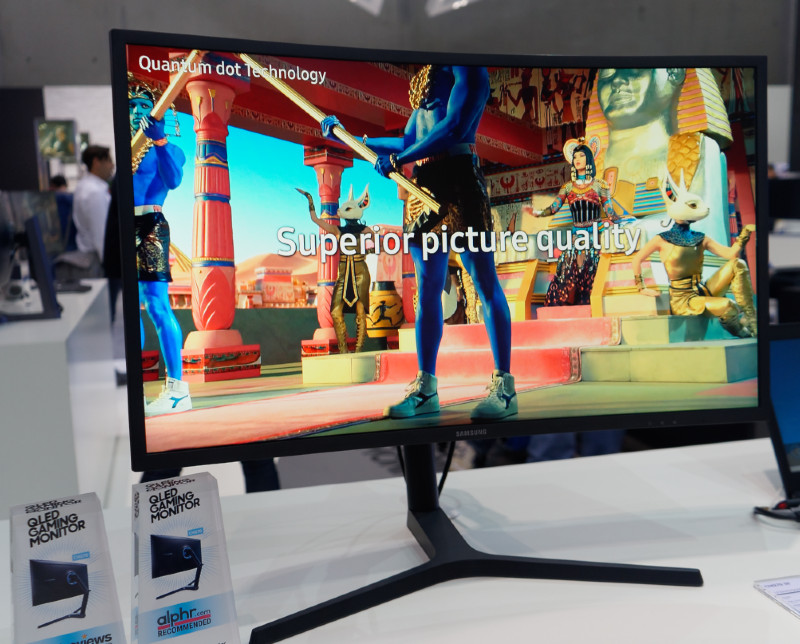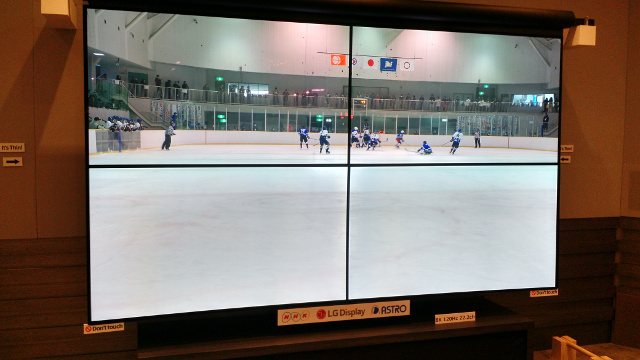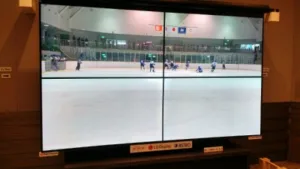I found a lot of people at IBC this week that believe that 8K is a long way away in the world of TV. I’m here to tell these content producers and distributors that they are wrong, but it won’t be the content side that drives it.

The drivers for a hard push to promote 8K will be the LCD makers and, especially Samsung and Sharp (Foxconn). At IFA a couple of weeks ago, these were the only two significant TV makers that didn’t talk about OLED. Sony, Panasonic, Metz, Loewe, TCL, B&O, LG (of course), Vestel and the rest were all highlighting the great image quality of OLED on their booths and at their press events.
Samsung didn’t talk about OLED because although it is completely dominant in the small OLED market, a few years ago it tried and failed to build large OLEDs in any significant volume and has withdrawn from that race, at least for now. Sharp, on the other hand, has shown some impressive small OLEDs at SID but has not gone into production and as far as I know, has never shown a big OLED.
Now, I’m assuming that LG would not particularly want to supply these two key competitors with its technology, especially as it can’t make enough at the moment, and for the next few years. I would be surprised if they would want to be buyers, either. (LG has a monopoly of the supply of 55″ and above OLEDs at the moment and for the foreseeable future).
QLED Sales Suffering
However, Samsung had a bad Q2 with its QLED LCD TVs – sales were said to be significantly down between Q1 of this year and Q2, while OLED sales were up. The word on the street from those tracking the market in detail is that at the same price points, Samsung’s arguments over colour volume and brightness are just not persuading buyers to buy from them. It’s the fantastic black level and contrast of OLED that is winning the sales.
 Samsung was highlighting QLED in its TVs and Monitors at IFA. Image:Meko
Samsung was highlighting QLED in its TVs and Monitors at IFA. Image:Meko
So, Samsung, particularly, has to react and the best way that it can do this is to find something that LCD can do that OLED can’t and that the consumer cares about. It’s clear that consumers do care about spatial resolution. We’ve seen that in the switch to FullHD and UltraHD.
There were some great demos of alternatives to more pixels at IBC – including a great demo of 1080P with 100Hz and HDR shown on the DVB and EBU booths – and that’s arguably a much better solution for the European market in particular, where sets are smaller. But consumers like bigger numbers and believe that with resolution, more must be better.
Viewing Distances
I hear all the time from those that understand the trade off in the visual system between viewing distance and acuity – “They just can’t see the difference”. However, watch consumers in the stores. They like to get up close to have a really good look at the quality of the image and, there, FullHD, UltraHD and 8K are all clearly different, if the content has not been mangled in the compression. And TV set makers are much less bothered about what their customers watch as about what they buy.
The key point behind the strong move I expect to see from Samsung to 8K at CES is that, as industry analyst, David Barnes, used to say before his retirement (and I miss his great insight!) “For LCD makers, the pixels are free”. 8K in cameras, production and transmission is really tricky. But for LCD makers with big fabs, it really isn’t.
The reality is that a 65″ 8K set is the same as 4 32″ UltraHD sets or 16 FullHD notebook panels. Of course, you might have issues with yields if you don’t have a really good process, but companies such as Samsung have very well understood processes for this level of technology. You might have some extra costs for drivers and driving itself will be trickier – with faster processors needed, but for the panel itself, it’s really not difficult.
 At NAB and IBC, NHK showed this 8K LG OLED display made from four UltraHD panels.
At NAB and IBC, NHK showed this 8K LG OLED display made from four UltraHD panels.
However, for the OLED maker, 8K is a mountain to climb. LG Display still has yields of less than 90% on its OLEDs above 55″ and it’s my understanding that the challenge is not the OLED side of the panel, but the TFT side. OLEDs need transistors with higher quality (electron mobility) and four or five times more of them than LCDs. That’s a challenge and, frankly, it’s something of a miracle that LG Display can make any real volume of such a complex product.
However, squeezing four times as many transistors on their substrates is likely to be horrendously difficult. Further, the OLED needs continuous adjustment and compensation at the pixel level and that has to be done during the frame blanking. Higher resolutions and frame rates (and bit depths) mean more data to be loaded and less time to do it. (See our article about Ignis a couple of years ago Can Ignis Enable the OLED TV Market?) and we later reported that LG had licensed the Ignis technology.
So, realistically, I can’t see LG making OLEDs at 8K in the next few years. It is noticeable that at the NHK demonstrations of 8K at IBC over recent years the OLEDs have always been (as they were this year) used in a configuration using four UltraHD panels, whereas it is some years since we saw the first 8K LCD.
Bob

